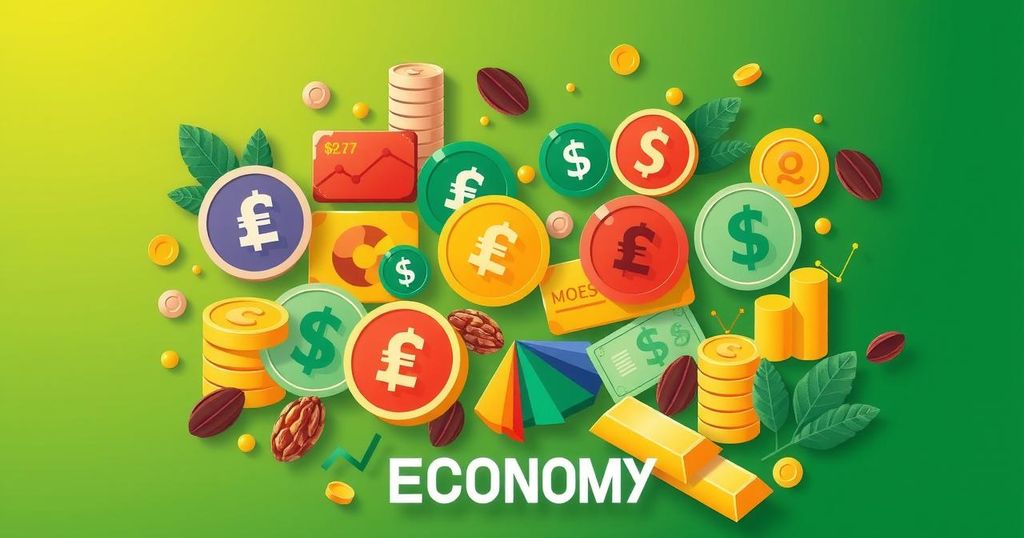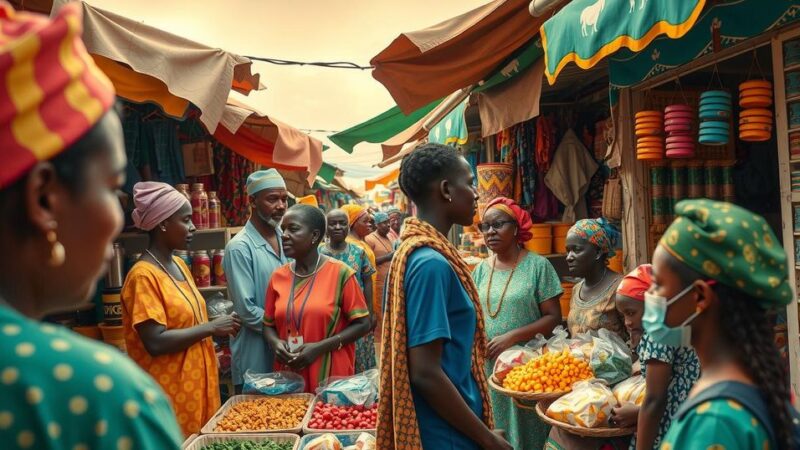Ghana’s economic outlook as of February 2025 reflects a mix of robust growth and significant challenges including inflation and rising poverty levels. After achieving a GDP growth of 6.3% in 2024, the IMF and World Bank project further growth in 2025. A national dialogue on economic reforms and recent debt restructuring are pivotal for future growth and stability.
As of February 2025, Ghana’s economic landscape is characterized by a mixture of challenges and opportunities. In 2024, the nation reported a robust economic performance, achieving an average real GDP growth rate of 6.3 percent over the first three quarters, a notable increase from 2.6 percent during the same period in 2023. This impressive growth was propelled by quarterly expansions of 4.8 percent, 7.0 percent, and 7.2 percent, marking the highest quarterly GDP growth in five years.
Forecasts for 2025 present varied projections; the International Monetary Fund (IMF) estimates a real GDP growth of 4.4 percent, whereas the World Bank holds a slightly lower prediction of 4.2 percent. Inflation continues to be a pressing issue, with the IMF predicting an 11.5 percent rise in consumer prices for 2025. Additionally, President John Mahama has initiated a “National Economic Dialogue” to reassess and modernize the existing $3 billion IMF program, aiming for a reform that reflects current economic conditions and fosters sustainable growth.
Late in 2024, Ghana accomplished a substantial $13 billion debt restructuring, which alleviated its debt burden by $4.7 billion. This crucial development enables the country to emerge from a near two-year default status and facilitates its re-entry into global capital markets. In terms of sectoral performance, the industrial sector is projected to grow between 4 and 6 percent in 2025, primarily driven by advances in gold mining and new lithium production.
The services sector is expected to be a key contributor to economic growth in 2025, thanks to ongoing reforms and technological investments. Conversely, agricultural growth is projected to hover around 3.1 percent year-on-year, facing challenges linked to climate conditions and limited financing.
However, poverty rates are forecasted to reach 31.5 percent in 2025 before gradually decreasing, largely due to stagnant growth in the services and agricultural sectors, alongside rising prices that surpass income increases for the most vulnerable populations. To conclude, while Ghana is confronted with economic concerns including inflation and rising poverty, strategic actions such as debt restructuring and governmental reforms pave the way for future sustainable growth and fiscal stability.
In summary, Ghana’s economic outlook for 2025 is filled with both challenges and prospects. The country has exhibited impressive GDP growth and has made significant advancements in debt restructuring. However, the looming issues of inflation and increased poverty rates require focused strategies. By implementing reforms and aligning fiscal policies, Ghana aims to achieve sustainable growth and improve the overall economic conditions of its citizens.
Original Source: www.ghanaweb.com






